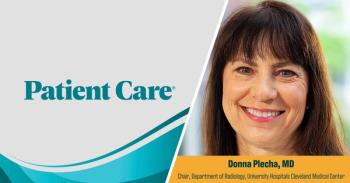
SABCS: Optimizing Breast Cancer Treatment with Biologics
SAN ANTONIO, Dec. 19 -- New biologic agents are proving useful in breast cancer treatment, but optimizing therapy requires careful attention to adverse event risk.
SAN ANTONIO, Dec. 19 -- New biologic agents are proving useful in breast cancer treatment, but optimizing therapy requires careful attention to adverse event risk.
So said a panel of speakers in a Genentech-sponsored satellite symposium held during the San Antonio Breast Cancer Symposium. The presentations focused on biologic agents targeting vascular endothelial growth factor (VEGF) and HER2.
The VEGF inhibitor Avastin appears particularly effective for metastatic breast cancer in combination with Taxol (paclitaxel), said Kathy D. Miller, M.D., of Indiana University in Indianapolis. She updated results from the E2100 trial comparing the combination to Taxol alone.
Combination therapy about doubled the overall response rate, she said. For all 680 patients, the response rate is now about 35% for Taxol (paclitaxel) plus Avastin compared with about 20% for Taxol alone, a significant difference. For the subset of 498 participants with measurable disease, the overall response rate is likewise significantly better for combination treatment (47% compared to about 25%).
Progression-free survival remains superior for the combination as well with additional follow-up, she said. Interestingly, a subgroup analysis suggested that patients in the trial who also received adjuvant chemotherapy containing a taxane had the most benefit from combination treatment (about 12.5 versus four months), she said. Changes in serum measures of the angiogenic factor VCAM-1 and VEGF did not correlate with overall response.
Other oral tyrosine kinase inhibitors of VEGF in early phases of development have also demonstrated efficacy for metastatic breast cancer, said Hope S. Rugo, M.D., of the University of California, San Francisco. Ongoing trials will help define optimal schedules, combinations, and settings for use of these agents, which include sunitinib (SU11248), Axitinib (AG013736), SU14813, pazopanib, sorafenib, and VEGF trap, she said.
However, VEGF has an important biological role in wound healing and kidney and vascular health, which are impacted by inhibition, said Joyce A. O'Shaughnessy, M.D., of the Baylor Sammons Cancer Center in Dallas. For treatment-emergent hypertension, she suggested:
- Consider increased blood pressure monitoring for grade one hypertension,
- Begin antihypertensive therapy and continue Avastin for grade two symptomatic hypertension,
- For symptomatic grade two or grade three hypertension or when the diastolic blood pressure is above 110 mmHg, hold Avastin until symptoms resolve and diastolic blood pressure is under 100 mmHg and use anti-hypertensives once Avastin is restarted at a reduced dose level, and
- Discontinue therapy for grade four hypertension.
To minimize the risk of arterial thromboembolic events, Dr. O'Shaughnessy suggested that Avastin should be discontinued permanently once such an event occurs and be cautious in starting Avastin for patients who have had an event within six or twelve months. She also suggested monitoring for significant proteinuria and to allow at least a month for healing after a major surgery before starting Avastin.
For adjuvant therapy of HER2-positive breast cancer, "Herceptin [trastuzumab] is the winner across protocols," said Charles E. Geyer, Jr., M.D., of the National Surgical Adjuvant Breast and Bowel Project in Pittsburgh and Drexel University in Philadelphia.
However, he added, "I think the key for efficacy is to get your patient Herceptin in a way that minimizes her toxicity."
The chemotherapy regimen containing both Adriamycin and Herceptin along with Cytoxan and Taxol is the one with the cardiotoxicity, he said, so careful patient selection is needed.
"When considering an [Adriamycin-Cytoxan-taxane-Herceptin] regimen, baseline risk factors for congestive heart failure should be considered," Dr. Geyer said, which would include baseline left-ventricular ejection fraction, age, and preexisting hypertension.
He said oncologists should also consider the traditional cancer staging criteria for absolute risk of recurrence in balancing the risk.
Combining Avastin and Herceptin is being studied as well, said Mark D. Pegram, M.D., of the University of California Los Angeles.
"There exists significant potential to exploit synergy between molecularly targeted agents and conventional therapy," he said.
Newsletter
Enhance your clinical practice with the Patient Care newsletter, offering the latest evidence-based guidelines, diagnostic insights, and treatment strategies for primary care physicians.
















































































































































































































































































